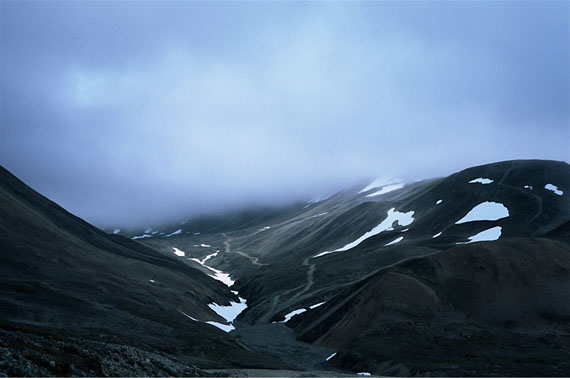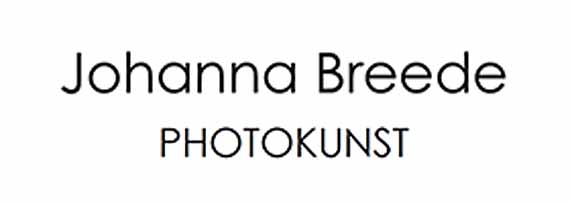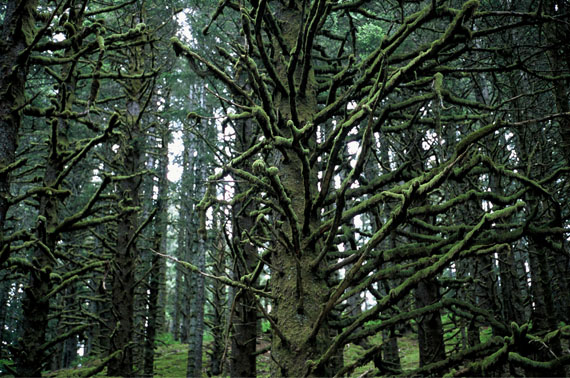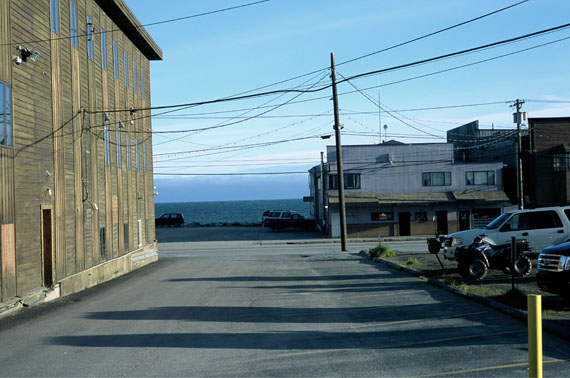
Ulrike Ottinger »
Chamisso's Shadow / Chamissos Schatten
Exhibition: 5 Dec 2015 – 27 Feb 2016
Fri 4 Dec 18:00 - 21:00

Johanna Breede PHOTOKUNST
Fasanenstr. 69
10719 Berlin
+49 (0)30-88913590
photokunst@breede.de
www.johanna-breede.com
Tue-Fri 11-17, Sat 11-14

ULRIKE OTTINGER
"Chamisso's Shadow"
"Wonderful, changeable lands, fields, meadows, mountains, steppes and sand deserts rolled out in front of my amazed eyes; there was no doubt , I had Seven-league boots on my feet."
from: Adelbert von Chamisso 'Peter Schlemihl'
Exhibition: December 5, 2015 – February 27, 2016
Opening: Friday, December 4, 6 - 9pm
The world is disrupted. Behind familiarity there is often the unknown; behind the present history extends itself. Wherever there is light there is also shadow - a discrepancy which is difficult to bear. From here to there it is often only a jump. Only a few manage to make exactly this jump to the homeland; to build a house on the cracks and borders. One who did manage this jump is the German-French naturalist and poet Adelbert von Chamisso. In an either/or situation he tried the third option. Although French was his mother tongue, he wrote some of his most beautiful texts in German; and although he came from an aristocratic background, he remained a free spirit and a liberal. When someone wanted to define this cosmopolitan philosopher by civilization und nation, he would escape in nature and discovery.
This must have been the case in 1815 when the then 34 year old "title scholar" boarded an expedition ship to Polynesia, Hawaii and Alaska. That was two hundred years ago. Enough time to rediscover this long route. The German artist Ulrike Ottinger (b. 1942) attempted this rediscovery. In her photo series „Chamissos Schatten“ (Chamisso’s Shadow) from 2014, the filmmaker and photographer followed the trail of the great discoverer. „In my project“, she wrote before embarking on her trip, „I am planning to follow the northern expedition route of Chamisso, Bering and Cook“. It is a journey through the steppes, mountains and sand deserts; an expedition to the Koryaks, Itelmes and Eskimos. „I will collect everything that I see and which seems exceptional on this trip“.
The cracks and the borders were especially interesting. They are the leitmotif of the large-format photographs that Ottinger brought back from her trips along with numerous films and accounts. As of December 5 they will be shown at the Berlin gallery Johanna Breede PHOTOKUNST. These images show a world full of fissures. It is a world on the border between tradition and modernity, but also poetry and reality. Titles such as "Zauberwald" (Magic Forest) or "Auch die Berge haben sich in Wale verwandelt" (The Mountains Also Transformed into Whales) bear witness to the poetic transformation that these landscapes have undergone through Ottinger’s camera lens.
Ottinger's photographic approach is similar to the aesthetics of the New Topographics – the American movement which wrote photographic history in 1975 with the legendary exhibition "Photographs of a Man-altered Landscape". Both artistic approaches are concerned with the changed landscape. Signs of civilization repeatedly appear in the endless rolling deserts in Ottinger's pictures; and deserted huts and rusty ships recount the immense change the region along the Bering Sea coast suffered in the past decades. But the New Topographics - Robert Adams or Stephen Shore – followed the shadows of pictures on their routes. Their work gleaned from the great landscape photographs of the first half of the 20th century. Ulrike Ottinger, however, follows the shadow of writing; on her feet the famous "Seven-League Boots", with which Adelbert von Chamisso once searched for the vastness. "Reise um die Welt" (Trip Around the World) was the title of the book published in1836, in which the Romantic poet related his expedition experiences. It was a book full of observations and anecdotes; a mix of poetry and science. These two poles are usually separated by a fissure. But both Ottinger, as well as Chamisso have a special talent in their art: they connect opposites into something new. They create a third option out of an either/or situation. (Text: Ralf Hanselle)
In cooperation with the Staatsbibliothek zu Berlin ULRIKE OTTINGER shows the exhibition:
"AROUND THE WORLD"
Forster – Humboldt – Chamisso – Ottinger
Dezember, 2 2015 – Februar, 27 2016
Potsdamer Str. 33 (Eingang Otto Braun Saal)
10785 Berlin
Tel.: +49 30 266 435100
Parallel to both exhibitions the Kino Arsenal will screen films from ULRIKE OTTINGER focusing on "Travelling the World" :
www.arsenal-berlin.de/weltreisen�

ULRIKE OTTINGER
"Chamissos Schatten"
"Wunderbare, veränderliche Länder, Fluren, Auen, Gebirge, Steppen, Sandwüsten entrollten sich vor meinem staunenden Blick; es war kein Zweifel, ich hatte Siebenmeilenstiefel an den Füßen."
aus: Adelbert von Chamisso 'Peter Schlemihl'
Ausstellung: 5. Dezember 2015 bis 27. Februar 2016
Eröffnung: Freitag, 4. Dezember, 18-21 Uhr
Die Welt ist zerrissen. Hinter Vertrautheit wohnt nicht selten die Fremde; hinter der Gegenwart erstreckt sich Geschichte. Wo immer Licht ist, da ist auch Schatten. Ein Zwiespalt, der nur schwer zu ertragen ist. Von hier nach dort ist es oft nur ein Sprung. Es mag nur den Wenigsten gelingen, genau diesen Sprung zur Heimat zu machen; ein Haus zu bauen auf den Rissen und Grenzen. Einer von diesen ist der deutsch-französische Naturforscher und Dichter Adelbert von Chamisso gewesen. Einer, der beim Entweder-Oder das Dritte versucht hat. Obwohl französischer Muttersprachler, schrieb er seine schönsten Texte vor allem auf Deutsch; obwohl von aristokratischer Herkunft, blieb er Freigeist und Liberaler. Und wer diesen kosmopolitischen Aufklärer auf Zivilisation und Nation festlegen wollte, dem wich er aus in Natur und Entdeckung.
So muss es wohl auch 1815 gewesen sein, als sich der damals 34jährige „Titulargelehrte“ an Bord eines Expeditionsschiffes auf Reisen nach Polynesien, Hawaii und Alaska begab. Zweihundert Jahre ist das nun her. Zeit genug also, um diese gewaltige Route erneut zu erkunden. Die deutsche Künstlerin Ulrike Ottinger (geb. 1942) hat dies versucht. In ihrer 2014 entstandenen Photoserie "Chamissos Schatten" hat sich die Filmemacherin und Photographin auf die Spuren der großen Entdecker begeben. "In meinem Projekt", so schrieb sie vor Reisebeginn, „plane ich den nördlichen Expeditionsrouten Chamissos, Berings und Cooks zu folgen.“ Eine Tour durch Steppen, Gebirge und Sandwüsten; eine Expedition zu den Korjaken, Itelmenen und Eskimos. "Ich werde auf dieser Reise alles sammeln, was mir begegnet und bemerkenswert erscheint."
Bemerkenswert waren vor allem die Risse und Grenzen. Sie geben das Leitmotiv der großformatigen Photographien ab, die Ottinger neben zahlreichen Filmen und Aufzeichnungen von ihrer Reise mit zurückgebracht hat. Ab dem 5. Dezember werden sie in der Berliner Galerie Johanna Breede PHOTOKUNST zu sehen sein. Diese Bilder zeigen eine Welt voller Brüche. Eine Welt auf den Grenzen zwischen Tradition und Moderne, aber auch Poesie und Wirklichkeit. Titel wie "Zauberwald" oder "Auch die Berge haben sich in Wale verwandelt" bezeugen die poetische Transformation, die diese Landschafen durch den Blick von Ottingers Kamera durchlaufen haben.
Ein wenig erinnert Ulrike Ottingers photographischer Ansatz an die Ästhetik der New Topographics – jener amerikanischen Bewegung, die 1975 mit der legendären Ausstellung "Photographs of a Man-altered Landscape" Photographiegeshichte geschrieben hat. Hier wie dort geht es um die veränderte Landschaft. So tauchen in den schier endlosen Geröllwüsten auf Ottingers Bildern immer wieder zivilisatorische Zeichen auf; und immer wieder erzählen verlassene Hütten oder verrostete Schiffe von dem gewaltigen Wandel, den die Region entlang der Beringsee-Küste in den zurückliegenden Jahrzehnten durchlitten hat. Doch die New Topographics - Robert Adams oder Stephen Shore - folgten auf ihren Routen dem Schatten von Bildern. Ihre Arbeiten waren Nachlesen zur großen Landschaftsphotographie in der ersten Hälfte des 20. Jahrhunderts. Ulrike Ottinger indes folgt dem Schatten der Schrift; am Fuß die berühmten "Siebenmeilenstiefel", mit denen Adelbert von Chamisso einst die Weite gesucht hat. "Reise um die Welt" hieß 1836 das Buch, in dem der romantische Dichter seine Expeditionserlebnisse verarbeitet hat. Es war ein Buch voller Beobachtungen und Anekdoten; eine Mischung aus Poesie und Wissenschaft. Zwei Pole, zwischen denen für gewöhnlich ein Riss verläuft. Doch sowohl Ottinger wie auch Chamisso verfügen in ihrer Kunst über eine besondere Gabe: Sie verbinden Gegensätze zu etwas Neuem. Aus Entweder-Oder schaffen sie Drittes. (Text: Ralf Hanselle)
Parallel zeigt ULRIKE OTTINGER in Zusammenarbeit mit der Staatsbibliothek zu Berlin die Ausstellung:
"WELTREISE"
Forster – Humboldt – Chamisso – Ottinger
2. Dezember 2015 bis 27. Februar 2016
Potsdamer Str. 33 (Eingang Otto Braun Saal)
10785 Berlin
Tel.: +49 30 266 435100
Anlässlich der beiden Ausstellungen zeigt das Kino Arsenal eine Filmreihe zum Thema "Weltreisen" mit Filmen von ULRIKE OTTINGER:
www.arsenal-berlin.de/weltreisen�

